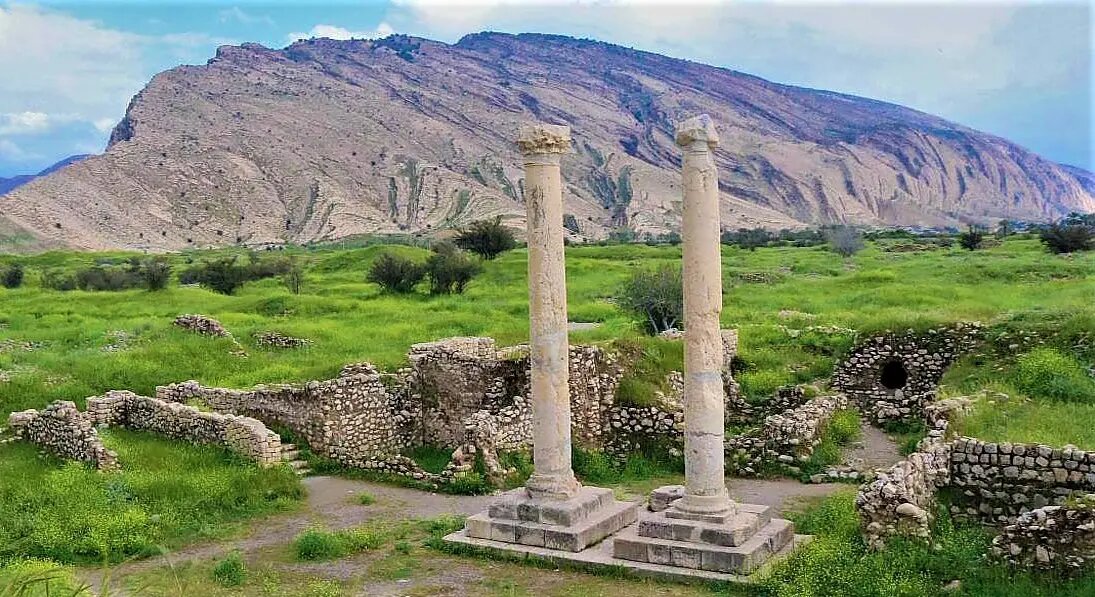Cultural heritage activist warns of potential threats to UNESCO-listed site in southern Iran

TEHRAN - A cultural heritage activist has voiced concerns over plans to cultivate approximately 30 hectares of land within the boundaries of the ancient city of Bishapur.
Situated in southern Iran, Bishapur, was inscribed as part of the “Sassanid Archaeological Landscape of Fars Region” by UNESCO in 2018.
Siavash Arya, who is an advocate of cultural heritage preservation, has provided evidence indicating significant excavation and partitioning of the ancient grounds of Bishapur, with vast amounts of stone and materials being removed, ISNA reported.
Arya, after conducting thorough investigations and inquiries, highlighted that preliminary approvals have apparently been granted for the extensive cultivation of narcissus flowers across an area of 30 hectares, a move he deems as a violation of cultural heritage laws.
“The area earmarked for the cultivation of narcissus flowers, with initial steps already taken, extends behind the World Heritage site, covering an area of 30 hectares.”

Further revelations from Arya indicate that the cultivation of narcissus flowers within the historic city of Bishapur has proceeded without the necessary project proposals and approvals from the Fars province’s tourism department.
Bishapur holds immense historical and cultural significance. Thus, Arya emphasized the necessity of adhering to cultural heritage laws, which strictly prohibit any agricultural activities, planting, or tree planting within historical sites without prior authorization.
He emphasized, “According to transparent heritage laws, any form of cultivation, planting, or afforestation is prohibited and constitutes a violation unless the individual or officials [who have approved such a plan] are exempt from legal consequences.”

Narratives say much of Bishapur was built by Roman soldiers taken captive after their Emperor Valerian was defeated in c. 260 CE.
Situated south of modern Faliyan, just off the ancient road between Persis and Elam, the city connected the Sasanian capitals Istakhr (close to Persepolis) and Firuzabad to Susa and Ctesiphon.
Surrounded by walls that may have stood some ten meters high, Bishapur was home to some 50,000 to 80,000 people.
The city remained an important city until the Arab invasion of Persia and the rise of Islam in the second quarter of the seventh century. It became a center of Islamic learning (a madrassah has been excavated) and there were still people living over here in the tenth century, but the decline started in the seventh century.
Bishapur has undergone several rounds of excavation so far. The Palace of Shapur, and a temple dedicated to the goddess of Anahita, were highlights of the digs.
The main monuments have been excavated between 1935 and 1941. Nevertheless, most of the city is still buried, and incidentally, teams of archaeologists returned to the site afterward.
In 2018, UNESCO added an ensemble of Sassanian historical cities in southern Iran -- titled “Sassanid Archaeological Landscape of Fars Region”-- to its World Heritage list. The ensemble is comprised of eight archaeological sites situated in three geographical parts of Firuzabad, Bishapur, and Sarvestan. It reflects the optimized utilization of natural topography and bears witness to the influence of Achaemenid and Parthian cultural traditions and Roman art, which later had a significant impact on the architecture and artistic styles of the Islamic era.
The Sassanid archaeological landscape represents a highly efficient system of land use and strategic utilization of natural topography in the creation of the earliest cultural centers of the Sassanid civilization.
AFM
Leave a Comment